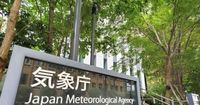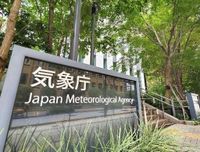As a low-pressure system moves across the Sea of Japan, the Japan Meteorological Agency (JMA) has issued warnings for hazardous weather conditions expected to affect northern and eastern Japan from the evening of April 15 through April 16, 2025. This weather event, characterized by unstable atmospheric conditions, raises concerns about severe thunderstorms, including tornadoes, hail, and sudden heavy rain.
According to the JMA, the low-pressure system is predicted to develop further as it progresses northeast toward Hokkaido, reaching the Sea of Okhotsk by April 16. The agency reports that strong cold air—dropping below minus 30 degrees Celsius—is currently situated about 5,500 meters above the region, contributing to the instability in the atmosphere. Additionally, warm, moist air is moving toward the low-pressure area, creating a volatile mix.
Residents of the Tohoku region, particularly along the Sea of Japan, are advised to remain vigilant as strong winds from the west are expected. The JMA has highlighted that if the pressure gradient intensifies beyond expectations, wind speeds could reach warning levels, causing potential disruptions and damage.
Forecasts indicate that maximum wind speeds could reach 18 meters per second (with gusts up to 30 meters per second) over the northern Sea of Japan, both at sea and on land. The southern part of the region is also expected to experience significant wind, with speeds of 13 meters per second (gusts up to 25 meters per second) on land.
In terms of severe weather phenomena, the JMA has specifically warned of the likelihood of sudden gusts, which could manifest as tornadoes, especially in the southern Tohoku region. These conditions are likely to lead to lightning strikes, hail, and heavy rainfall, posing risks to both agricultural activities and infrastructure.
Farmers and agricultural workers are particularly urged to take precautions against hail damage to crops and agricultural facilities. The JMA recommends monitoring weather updates closely and preparing for rapid changes in conditions. If signs of approaching cumulonimbus clouds—indicative of severe thunderstorms—are observed, individuals should seek shelter in sturdy buildings to ensure their safety.
This forecast comes as part of the JMA's ongoing efforts to keep the public informed about potentially dangerous weather patterns. The agency emphasizes the importance of preparedness and awareness, particularly as spring weather can often be unpredictable.
As the situation develops, residents and visitors in affected areas are encouraged to stay updated through reliable weather sources and heed any warnings issued by local authorities. The JMA continues to monitor the situation and will provide updates as necessary.




